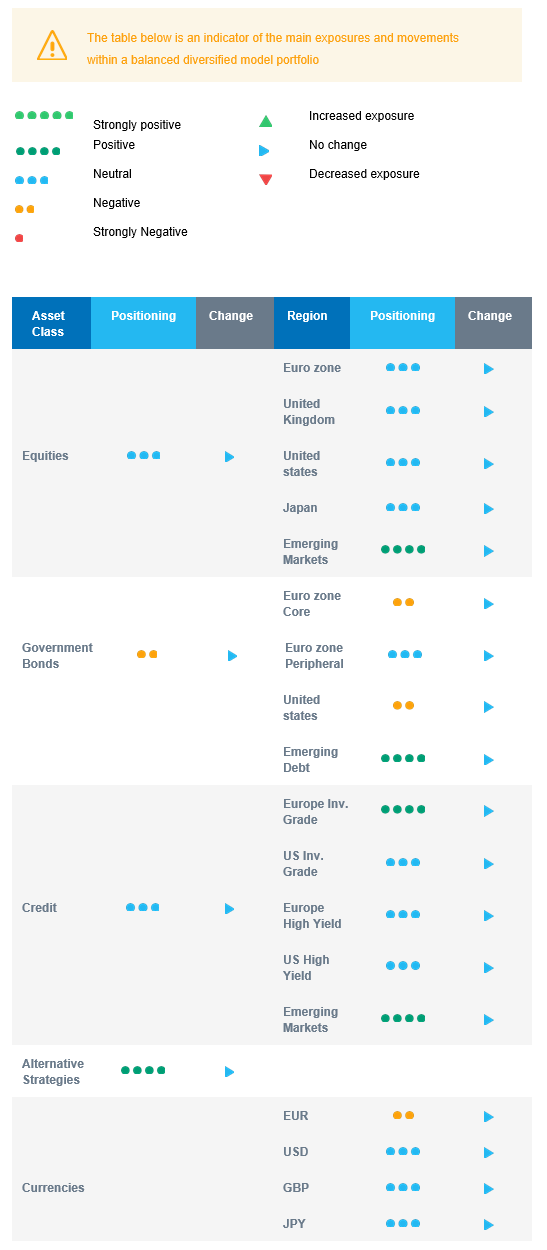Last week in a nutshell
- The US economy continued to surprise on the upside as robust data were released, including jobless claims and January retail sales.
- In addition, ongoing inflationary pressures on consumer and producer sides have persisted.
- This has triggered a hawkish tone from several Fed members and pushed bond yields higher.
- In Europe, the EU Commission has upgraded its GDP growth forecasts for the region and cut its inflation forecast for 2023 and 2024.
What’s next?
- Friday will mark the one-year anniversary of the invasion of Ukraine by Russia.
- Global flash PMIs are expected to give some hints on the strength of the global economy in February.
- In Europe, several soft data will be published, notably the German ifo and ZEW surveys, along with business confidence in Belgium and consumer confidence indicators in France
- The earnings season will feature Walmart and Home Depot in the US giving insights on shoppers' behaviours, and investors will also hear from some of China's most prominent names like Baidu and Alibaba.
Investment convictions
Core scenario
- Our current economic scenario is based on a soft landing of the US economy in 2023. We expect a consolidation phase on financial markets in the short-term after a strong start to the year.
- Credit is a strong conviction for the start of 2023 since the carry that was reconstituted by the rise in yields in 2022 looks attractive. We are overweight Credit, including Emerging market debt.
- We see equity markets moving within a broad range: limited to the upside by the actions of central banks, which will ensure that financial conditions do not ease too quickly if the economy is holding up well and supported by a faster monetary policy pivot if the economy is too hard hit.
- We expect emerging market to outperform as valuation has become more attractive while Asia keeps superior long-term growth prospects vs. developed markets, given that China’s re-opening is rather quick.
- The likelihood of the euro zone growth being severely hit by the natural gas crisis is lower thanks to warm weather. The labour market and consumption are holding up. Inflationary pressure lessened somewhat. With the re-opening of China, Europe should likely resume its export growth.
- In this environment, we expect Alternative investments to perform well.
Risks
- The bounce observed since October, and which continued unabated since the start of the year has reached an unusual, extreme steepness. A pause in the steep returns registered since the start of the year appear appropriate going forward.
- Overall, inflation declines and a rise in growth at some point in 2023 is limiting the market downside. But we know that the central banks anti-inflation stance is also capping the upside potential for risky assets. We note a more hawkish tone in February which has pushed yields higher.
- As central banks become more data dependent, and, for the time being, the economy is surprising on the upside, markets might price in a more restrictive Federal Reserve than currently anticipated.
- Among the upside risks, the Chinese re-opening is good news for the domestic and global growth as long as there is no global inflation spill over via a resurgence of commodity prices in the context of constrained supply.
Cross asset strategy
- Our multi-asset strategy was constructive since October but now identifies signs pointing towards a consolidation. With a less attractive risk/reward on the US equity market, we moved to a neutral stance on equity, and US equity, at least in the short term. The strategy remains nimble and can be adapted quickly.
- We are neutral equities vs bonds. We have convictions in specific assets.
- Within regional equity preferences, we believe in the Emerging markets region, as valuation is relatively attractive and there is room for a catch-up vs. developed markets.
- In the current environment, we prefer defensive sectors, such as Healthcare and Consumer Staples while a pause in the steep Tech sector returns appear warranted.
- The Health Care sector is expected to provide some stability: no negative impact from the war in Ukraine, defensive qualities, low economic dependence, innovation, and attractive valuations.
- In addition, the current context continues to favour companies with pricing power, which we find in the Consumer Staples.
- In bonds, most asset classes have an attractive carry. European investment grade credit is one of our strongest convictions. We also have exposure to emerging debt and to global high yield debt.
- We have a slight short duration positioning via core Europe and the US.
- We have exposure to some commodities, including gold and the Canadian dollar, as a proxy.
- In our long-term thematics and trends allocation: We favour investment themes linked to the energy transition and keep Technology in our long-term convictions. We expect Automation and Robotisation to recover in 2023, and a growing interest in Climate and Circular Economy-linked sectors (such as Industrials and Technology).
Our Positioning
Our current positioning is neutral equities, with a preference for Emerging markets. On the fixed income side, we have a constructive view on investment Grade credit. We keep a slight short portfolio duration via EU and US sovereign bonds. We recently shortened our US duration, as markets might price in a more restrictive Federal Reserve than currently anticipated. We remain allocated to some commodities.

